

August 2024 Edition!
AIU News + Essays + Education + Culture + Science + Technology + Art + Design + Body + Mind + Environment + Human Rights + Animal Rights + + Culinary Arts + About AIU


AIU News + Essays + Education + Culture + Science + Technology + Art + Design + Body + Mind + Environment + Human Rights + Animal Rights + + Culinary Arts + About AIU
 What do Google Alphabet,
Coca Cola, Meta, Penn
State University or Microsoft,
have in common with Atlantic
International University?
We are very happy to inform
you that AIU has signed a
membership and accreditation
agreement with DMI, Digital
Marketing Institute, the world’s
leading Global Certification &
Professional Body for the digital
marketing industry.
What do Google Alphabet,
Coca Cola, Meta, Penn
State University or Microsoft,
have in common with Atlantic
International University?
We are very happy to inform
you that AIU has signed a
membership and accreditation
agreement with DMI, Digital
Marketing Institute, the world’s
leading Global Certification &
Professional Body for the digital
marketing industry. JUNE 17, 2024.
We want to
congratulate our
AIU graduate for
his most recent
achievement.
JUNE 17, 2024.
We want to
congratulate our
AIU graduate for
his most recent
achievement. Call for Papers
This Conference will be held
24-25 October 2024
at Interamerican Open
University, Buenos Aires,
Argentina.
+ Online
Call for Papers
This Conference will be held
24-25 October 2024
at Interamerican Open
University, Buenos Aires,
Argentina.
+ Online JULY 2024. These graduate students completed the majority of the requirements
to obtain honors, which included a 4.0 GPA, published works, recommendation
from their respective advisors, patent a product, etc.
Congratulations!
JULY 2024. These graduate students completed the majority of the requirements
to obtain honors, which included a 4.0 GPA, published works, recommendation
from their respective advisors, patent a product, etc.
Congratulations! JULY 2024.
These graduate students
completed their program with
a high cumulative grade
point average, which reflects
the quality of performance
within their respective major.
Congratu lations!
JULY 2024.
These graduate students
completed their program with
a high cumulative grade
point average, which reflects
the quality of performance
within their respective major.
Congratu lations!
| Guaicaipuro José Jiménez Jiménez Doctor of Science Health Care Management Aruba |
Daniel Manuel Valdés Henríquez Doctor of Science Environmental Science Chile |
Erwin Bryan Utchanah Doctor of Education Education China |
Domingo Israel Fernández García Master of Electrical Engineering Renewable Energy Dominican Republic |
Seneida Antonia Paula Rodríguez Doctor of Management Project Management Dominican Republic |
Santa González Luciano Doctor of Psychology Clinical Psychology Dominican Republic |
| Juan Galo Rivera Gonzalez Bachelor of Science Civil Engineering Ecuador |
Pablo H. Hernández Hernández Bachelor of Education Education El Salvador |
Malick Bojang Bachelor of Science Civil Engineering Gambia |
Elvira Anthea Adjei Master of Nutrition Nutrition Science Ghana |
George Mensah Doctor of Business Administration Business Administration Ghana |
Gyau Solomon Kwabena Doctor of Education Curriculum, Educational Policy and Mgmt. Ghana |
| Julio Leonel Rosales Batres Master of Science Geographic Information Systems Guatemala |
America Ernestina Briones Hernandez Bachelor of Science Psychology Guatemala |
Ely Silvana González Gómez Bachelor of Education Education Guatemala |
Gerardo Josué Borjas Ferrera Doctor of Science Food Science Honduras |
Ali Conde Associate of Legal Studies Criminal Justice Ivory Coa st |
Simone Grant-Clarke Doctor of Philosop hy Business Administration Jamaica |
| Mirla Yuriko Nakayo Tiznado Master of Nutrition Feeding and Dietetics Japa n |
Tracey Wangechi Kimathi Post-Doctorate of Business Management Management Kenya |
Melissa Antoine Bou Rached Doctor of Science Public Health Leba non |
Sophia Loreen Atieno Oduol Doctor of Education Leadership and Policy Analysis Lesotho |
Alfred Panji Kasimba Mwandira Master of Science Psychology Malawi |
Karen Ann D’Cruz Doctor of Science Telecommunications Malaysia |
| Noé Hernández Guajardo Post-Doctorate of Education Education Mexico |
Adegoke Adeniran Master of Science Information Technology Nigeria |
Archibong, Bassey Essien Doctor of Philosop hy Food Security Nigeria |
Lidia Karen Carrasco Muñoz Bachelor of Business Administration Business Administration Peru |
Santos García Huamán Bachelor of Education Artistic Education Peru |
Glenda Marie Viera Rivera Doctor of Philosop hy Environmental Science Puerto Rico |
| Carlos J. Almodóvar Rivera Doctor of Business Administration Accounting Puerto Rico |
David Clement Mahlalela Doctor of Legal Studies Legal Studies South Africa |
Dhieu Mathok Diing Wol Post-Doctorate of Arts Conflict Resolution and Peace Building South Sudan |
Fortuna Anthony Doctor of Education Education St. Lucia |
Rajhat Salim Ally Bachelor of Business and Economics Business Management Tanza nia |
Charles Tumaini Mbaga Doctor of Philosop hy Business Management Tanza nia |
| Elisande Amian Mhanga Doctor of Business Administration Marketing Tanza nia |
Mayas Sankar Doctor of Education English Language Education Türkiye |
Moses Komakech Bachelor of Science Supply Chain Management Uganda |
Kenechukwu Kingsley Nwangwu Doctor of Philosop hy Mod. Energy and Renewable Energy Systems United Kingdom |
Jorge Alex Deutsch de Barros Doctor of Philosop hy Administration and Business Management Uruguay |
Anabel Ventura Lantigua de Campaña Bachelor of Education Education USA |
| Danauris Mieses Bachelor of Science Computer Engineering USA |
Gloria Tatiana Solis Soler Bachelor of Education Education USA |
Mitike Bitewulign Desta Doctor of Management Tourism Management USA |
Maritza Ramos Cerezo Bachelor of Science Psychology USA |
Musi Bridget Barbara Khumalo Doctor of Journalism Journalism Zimbabwe |
|

 Annie Bui
Annie Bui  Sophia Oduol
Sophia Oduol  Theresa Akindeju
Theresa Akindeju  Nnenna Ezeokafor
Nnenna Ezeokafor 
When reading the title of
this article it seems like
a contradiction, two opposites:
being happy in the society
of misinformation
and hate speech. Yes, we
are in a society that every day,
every minute is a lie and an
attack. They are effectively two
opposites. Let’s break down
each concept to find a way to
be happy. It seems impossible!
What is the disinformation
society? Disinformation is
using all possible means to lie
about what is happening, about
anything. We are witnessing
the way the media is used:
misinformation is given in every
possible way and by people
you cannot imagine.
Countries with high economic
development are looking
for the laws to control what is
said with Artificial Intelligence.
It reaches such an extreme that
concepts that they have never
said are put into the mouths
of people and organizations.
Another very important situation
is the purpose for which it
is said: harm and damage.
There are many platforms
with teams dedicated to lying
to obtain the benefits that
seem to their owners or those who hire them. The work in
this matter is such that they
change and change what they
misinform at a speed that is
unimaginable. To the war with
weapons, we must add the war
of misinformation.
In these days, two major
Summits were held: that of
the Group of 7 (G7) and one for
peace in Ukraine where the
main actor was the President of
the same Volodymyr Zelensky.
The G7 is an economic and
political organization of the
seven most industrialized
countries that was created in
1973 and is made up of: the
United States, Canada, Germany,
France, the United Kingdom,
Italy and Japan. Until
1997, Russia was a member of
the group, excluding it in 2014
when it seized Crimea, which
is located in eastern Ukraine.
Russia was not a full member.
The 2024 Summit was held
in Italy, in Apulia, from June 13
to 15. The central topics were
the Wars in Ukraine and Gaza
and the problem of the Chinese
economy. The organizer of this
Summit was the Prime Minister
of Italy Georgia Meloni. The
representatives of each country
were: USA President, Joe Biden;
Canada Prime Minister, Justin
Trudeau; Germany Chancellor
Olaf Schulz; France President
Emmanuel Macron; United
Kingdom Prime Minister
Rishi Sunak; Italy Prime Minister, Giorgia Meloni; Japan
Prime Minister, Fumio Kishida.
At this Summit, among
the special guests were Pope
Francis, the Secretary General
of the United Nations, António
Guterres and the President of
Ukraine, Volodymyr Zelensky.
At the Summits, the representatives
of the seven countries
bring common problems
and solutions on which they
agree; it means that it’s not a
Summit to dissent.
The Ukraine Peace Summit
was held in Switzerland on
June 15-16. “Our unity here
proves that the very idea of
international law is still alive
and effective, your presence
here demonstrates that the UN
Charter and the conventions
are not a formality, but the real
foundations of coexistence between
peoples.” Zelensky. Ukraine
Peace Summit. Swiss. June 2024.
https://efe.com/mundo/2024-06-15/
cumbre-paz-guerra-ukrania-lucerna/
We mention these recent
events so that we can see how
misinformation is used. Take a tour of the media you want and
see what you find. You wonder
why what you saw is happening?
What is the finality? The
purpose is that everyone sells
their truth to obtain a benefit
no matter who it harms.
Can you imagine the society
that is created? Can you imagine
what happens to people
who study? Can you imagine
what world people with little
education live in who hear others
mention the topics we have
covered in the way it is done?
The media, for the most part,
take advantage of the way it
should be worked: any document
must mention the issue to
be discussed, create interest by
doing so and close with the answers
to the topic in question.
The media nowadays abuse and
leave the interlocutor without
the final part: they leave them
questioning so that they can
return for the remaining information
in order to increase the
demand for the media.
We also have people who
work in the media and are only
readers of information and feel
like journalists and begin to
add concepts that don’t correspond
to the truth.
The journalist is the one who
analyzes the concepts they
have there and reports. The
scientist is the one who seeks
the truth by verifying it with
the method that the science in
question has. With all the above, imagine
what happens to people’s
brains in today’s society. The
tension in which today’s global
society lives is very high at
the expense of those who only
want money.
Let’s now deal with Hate
Speech. We are in a society in
which everything consists of
attacking others with whatever
words: you have to be as hurtful
as possible. This form of
communication is used by all
types of people: it doesn’t refer
to rich or poor, nor to people
who are literate or not; it happens
at all levels. The goal is
to hurt the other as much as
possible to deprive them of
what they want to take away
from them.
We are in a society in which
they have to have whatever
way they can. You would think
that with everything that happened
with the 2019 Covid
pandemic and the many deaths
that we would have a society
that loved others. Now everyone
wants to have and have at
whatever price. How to live in
a society where everything is
misinformation, lies and attacking
others no matter how
much? Is it possible that time
passes and we just wait to die?
The sad thing about it all is
that it’s a global situation and
in any activity that is carried
out. It’s also not a priority of
a culture or a skin color. It’s the pandemic that has followed
or came along with the 2019
coronavirus.
We must find the solution to
be able to live because life is to
be happy. Being happy is being
able to perform the skills we
were born with and those we
are acquiring.
If you are doing a program at
Atlantic International University
(AIU) it’s so that you can
do your work and achieve your
degree. What do we have to do
to make happiness possible?
What you have to do with misinformation
is to work, look for
answers with reliable sources.
And with hate speech, what
should be done? Hate speech
is offending, attacking others
as much as possible to deprive
them of their property or their
value as a human being in their
environment. It’s the way to
achieve the goods or prestige of
others without working for it.
Hate speech can begin with
someone shouting because
something improper was done,
which is most likely not true;
it’s done to make the other
person feel bad and lower their
attention to what the facts are.
Screaming is a way of hurting
to oppress the other. Those
are the so-called toxic people.
What we have to do with
this form of hate speech is to
walk away from people when
they start shouting. They can
also start this type of speech with subtlety so that the other
person doesn’t feel what they
are saying. One form of hate
speech is those who speak ill of
others; the purpose is the theft
of the other’s prestige.
Hate speech is also part of
the media when facts are said
that don’t correspond to a person
or they are described with
degrading adjectives or verbs.
Everything, the same, the theft
of his prestige to benefit from
them. You have to stay away
from the people we describe
because everything is: having
without making an effort for it.
Disinformation and hate
speech have the same purpose:
to eliminate the other to take over what they are or have.
What should be done in both
cases? Stay away from those
who use that strategy for not
to work. Only this way can we
be happy in the society of misinformation
and hate speech.
We would say that, with so
much science and so much
technology and also with
Artificial Intelligence we would
have a society in which we
would be immensely happy.
It’s not like this.
Let’s defend ourselves from
those who only want money no
matter what happens to us.
Long live peace
and with it the love
of each other!
BIBLIOGRAPHY. Mpoke Bigg, M. Qué es el grupo de los 7. New York
Times- 13 Junio 2024. https://www.nytimes.com/es/2024/06/13/espanol/g7-
que-es.html | Zelenski. V. Cumbre por la paz de Ucrania. Suiza. Junio
15 y 16. 2024. https://efe.com/mundo/2024-06-15/cumbre-paz-guerra-ucrania-
lucerna/ | ONU - La Declaración Universal de los Derechos Humanos.
https://www.un.org/es/about-us/universal-declaration-of-human-rights

Expressive psychotherapy
techniques have positioned
themselves as an ally for
health, either to improve some
pathology or to provide quality
of life to the patient. Based on
this we conducted our qualitative
study to demonstrate the
benefits for physical, mental
and emotional health. This
study was conducted in four
study groups in the city of Quito, Ecuador: the first group
of patients with chronic and
catastrophic diseases (Club
Huella Esperanza), the second
group of elderly patients, the
third group of young university
students (Tango Club of the
Universidad de las Americas
UDLA) and the fourth a mixed
age group made up of life
partners and people who just
wanted to experience the connection
through the embrace
that tango offers.
Tango therapy (therapy
through tango), belongs to
these expressive therapies; it
can be performed individually,
in couples or in groups; this
study I did with my collaborator
and tango therapist (T.T.)
Jael Rebeca Montilla Noguera;
in it we work sessions and
workshops adapting to each
activity, physical and mental
dynamics according to each requirement
of the patient (age,
physical condition, health and
emotional). In our sessions we
also include clinical psychology
techniques, couples and family
therapy, gestalt therapy, psycho-
oncology, NLP techniques, music therapy, dance therapy,
aromatherapy, minfulness and
of course elements of tango,
so that by containing a little of
the above mentioned makes a
multimodal therapy method, in
which each dynamic plays an
important role in each case or
in each particular group.
Nowadays more and more
members of the health team of
different specialties are joining
to experiment and demonstrate
the benefits of tango therapy
that contributes in different
pathologies to physical activity
and improvements in the quality
of life because it involves
mental and emotional wellbeing;
these scientific studies
have been documented in
research works for more than
25 years; to cite just a few, as
an example;
Year 1999. Tango therapy in
Parkinson Patients, Patients
with Cardiovascular Pathologies
and Sedentary Patients.
Dr. Roberto Peidró, director of
the Life Center of the Favaloro
Foundation – Argentina, is
a pioneer in the investigation
of the applications and therapeutic use of tango, he
evidenced in the coordination
of tango the benefit for
patients with Parkinson and
in patients with cardiovascular
problems, since such therapy
influences increasing the aerobic
capacity in these patients
and therefore diminishing
the levels of the corticotropin
releasing hormone, regulator
of stress and hypertension and
memory disorders.
Year 2007. Tango therapy in
patients with Parkinson’s disease.
University of Washington
(United States), research that
shows that the frequent use of
tango therapy improves balance
in Parkinson’s patients
over other types of physical
activity. The results appear in
the December 2007 issue of
the Journal of Neurologic Physical
Therapy.
Year 2016. Tango therapy
for Patients with Peripheral
Neuropathy. The Ohio State
University, analyzes the benefits
of tango in patients with
peripheral neuropathy, which
is one of the side effects of
chemotherapy patients.
Year 2021. Tango in aging
when dance is prevention and
therapy. Dr. Veronica Ferreira
Perdigau, Luxembourg.
She bases her Master thesis in
Psychology on the benefits of
tango therapy analyzing the
psychological mechanisms that
are enjoyed in tango and the benefits to treat and delay aging
in older adults.
I only wanted to cite four
studies because there are many
more; where the purpose is to
investigate and corroborate the
benefits of therapy through
tango; which coincide with our
studies in each group analyzed.
And what are these benefits
then? Based on three important
elements that it contains; we
were able to demonstrate the
following benefits:
A. The embrace: this element
can improve balance,
posture, coordination of our
movements, aerobic capacity
(by movement), the distribution
of our body fat, muscular
endurance, among others. It
has also been confirmed that
in a 20-second hug. We release
hormones that help to control
our emotions (imagine then
how it is magnified in the 2 or
3 minutes of enjoyment of a
piece of tango.
B. The Connection: with
the connection that we enjoy
in tango we can improve and
promote our socialization
because tango allows a nonverbal
conversation between
two people; this connection
adds to the awareness of our
body image and self-esteem
in addition to locate us in time
and space in the here and now
(gestalt therapy).
C. Improvisation: this useful
element stimulates our mind and memory as well as creativity,
perception and therefore
our learning.
With our patients we were
able to demonstrate (corroborating
previous scientific studies)
how tango therapy helps to
improve the health of patients
with certain pathologies:
Parkinson’s. Increases firmness,
confidence and agility of
movements, reinforcing their
balance.
Patients with other chronic
and catastrophic diseases.
When the patients express
themselves with dance and
interprets their emotions, they
improve their quality of life,
they place themselves in the
here and now, reinforce their
state of mind and the way they
confront any situation of their
daily life.
Oncology patients. Tango
therapy contributes to improve
balance.
Cardiac pathologies and
hypertension. Patients improve
their cardiovascular capacity,
reducing stress, anxiety and
depression.
Mental illnesses such as
Schizophrenia, Bipolarity
and Alzheimer’s. It improves
communication, the balance
of emotions; and even the
element of improvisation that
stimulates creativity and mental
stimulation, contributes to
the prevention of Alzheimer’s
and mental illnesses. Through our study we were
also able to certify together
our own method before the
Academia Argentina de Tango
Terapia. This method of work
through workshops is called
Cultura tango which is supported
with expressive therapy
techniques directed especially
to patients with the pathologies
described above and in
turn to anyone who wishes to
contribute to their physical
and mental health; additionally
our goal is also focused on
training facilitators to serve as
multipliers of tango therapy
workshops whose purpose is
to add to the physical, mental,
emotional and quality of life of
any person. Each time we are more
convinced that this path taken
through tango therapy and its
tools continues to contribute to
the health of our patients. With
tango therapy each person,
each patient, advance at their
own pace without frustration
or pressure, enjoying the
process, erasing limitations or
limiting beliefs that in most
cases are only found in their
min. Each patient assimilates
our method of tango therapy
(Tango culture); each dynamic,
each activity is adapted to each
patient to each therapy group,
thus achieving the development
of their capabilities, a
therapy to improve their life...
their health.
12
Image: Courtesy of the author
Publications by Students: aiu.edu/StudentPublication.html
During
 On the first day of her class, Annika
Martin asks the assembled researchers
at the University of Zurich in
Switzerland to roll out their yoga mats
and stand with their feet spread wide
apart. They place their hands on their
hips before swinging their torsos down
towards the mat and back up again. ...
Martin, a health psychologist, can
sense that some students are sceptical.
They are academics at heart, many
of whom have never tried yoga, and
registered for Martin’s course to learn
how to deal with the stress associated
with academic research. Over the
course of a semester, she teaches her
students about stress and its impact
on the body before giving them the
tools to help cope with it —from yoga,
meditation and progressive muscle
relaxation to journalling. It is one of many initiatives designed
to combat the mental-health crisis that
is gripping science and academia more
broadly. The problems are particularly
acute for students and early-career
researchers, who are often paid meagre
wages, have to uproot their lives every
few years and have few long-term
job prospects. But senior researchers
face immense pressure as well. Many
academics also experience harassment,
discrimination, bullying and even
sexual assault. The end result is that
students and academics are much more
likely to experience depression and
anxiety than is the general population.
But some universities and institutions
are starting to fight back in
creative ways. ...
Read full text:
On the first day of her class, Annika
Martin asks the assembled researchers
at the University of Zurich in
Switzerland to roll out their yoga mats
and stand with their feet spread wide
apart. They place their hands on their
hips before swinging their torsos down
towards the mat and back up again. ...
Martin, a health psychologist, can
sense that some students are sceptical.
They are academics at heart, many
of whom have never tried yoga, and
registered for Martin’s course to learn
how to deal with the stress associated
with academic research. Over the
course of a semester, she teaches her
students about stress and its impact
on the body before giving them the
tools to help cope with it —from yoga,
meditation and progressive muscle
relaxation to journalling. It is one of many initiatives designed
to combat the mental-health crisis that
is gripping science and academia more
broadly. The problems are particularly
acute for students and early-career
researchers, who are often paid meagre
wages, have to uproot their lives every
few years and have few long-term
job prospects. But senior researchers
face immense pressure as well. Many
academics also experience harassment,
discrimination, bullying and even
sexual assault. The end result is that
students and academics are much more
likely to experience depression and
anxiety than is the general population.
But some universities and institutions
are starting to fight back in
creative ways. ...
Read full text:
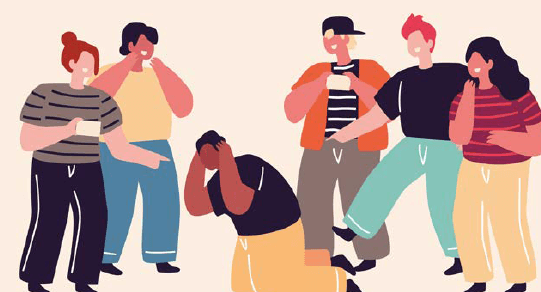 When there is a crisis, some people
feel defensive and blame other
people and groups. When someone sees
a group as a threat, it might lead them
to act or speak hatefully to members
of that group. They might show hate
to defend the way things are and stop
change from happening. Some ways the
pandemic led to an increase in hate:
Stress about money. Losing work or
having trouble paying the bills may increase
hate. People may think another
group has an unfair advantage.
Isolation and loneliness. When
people feel disconnected and alone,
they are more likely to be attracted to
hate-based ideas and groups where
they feel they can belong.
Thinking hate is okay. Hearing hateful
things in the news or online can
make hate seem more normal. Anxiety and fear. Having someone
to blame can help people feel they can
explain and control a scary situation.
Pushing back against progress on
social issues. Reacting with hate to
social movements such as Black Lives
Matter protests.
Public health measures. Lockdowns,
masks and vaccines led people to feel
anxious or distrustful. They found it
easier to believe conspiracy theories
and extreme views.
Other ways of hate that increased
during the Covid-19 pandemic are:
Misinformation, disinformation and
conspiracies • Far right and hate-based
groups • Misogyny and hate-based
movements • Radicalization ...
Read full text:
When there is a crisis, some people
feel defensive and blame other
people and groups. When someone sees
a group as a threat, it might lead them
to act or speak hatefully to members
of that group. They might show hate
to defend the way things are and stop
change from happening. Some ways the
pandemic led to an increase in hate:
Stress about money. Losing work or
having trouble paying the bills may increase
hate. People may think another
group has an unfair advantage.
Isolation and loneliness. When
people feel disconnected and alone,
they are more likely to be attracted to
hate-based ideas and groups where
they feel they can belong.
Thinking hate is okay. Hearing hateful
things in the news or online can
make hate seem more normal. Anxiety and fear. Having someone
to blame can help people feel they can
explain and control a scary situation.
Pushing back against progress on
social issues. Reacting with hate to
social movements such as Black Lives
Matter protests.
Public health measures. Lockdowns,
masks and vaccines led people to feel
anxious or distrustful. They found it
easier to believe conspiracy theories
and extreme views.
Other ways of hate that increased
during the Covid-19 pandemic are:
Misinformation, disinformation and
conspiracies • Far right and hate-based
groups • Misogyny and hate-based
movements • Radicalization ...
Read full text:
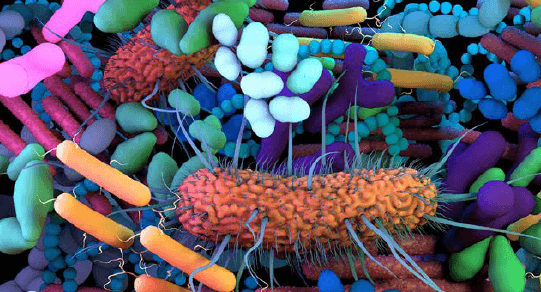 Scientists have raised hopes for a
cheap and simple test for autism
after discovering consistent differences
between the microbes found in
the guts of autistic people and those
without the condition.
The finding suggests that a routine
stool sample test could help doctors
identify autism early, meaning people
would receive their diagnosis, and
hopefully support, much faster than
with the lengthy procedure used in
clinics today.
“Usually it takes three to four years
to make a confirmed diagnosis for
suspected autism, with most children
diagnosed at six years old,” Prof Qi Su
at the Chinese University of Hong Kong
said. “Our microbiome biomarker panel has a high performance in children
under the age of four, which may help
facilitate an early diagnosis.”
Rates of autism have soared in recent
decades, largely because of greater
awareness and a broadening of the criteria
used to diagnose the condition. In
the UK and many other western countries,
about one in 100 people are now
thought to be on the autism spectrum.
Studies in twins suggest that 60-90%
of autism is down to genetics, but other
factors contribute, such as older parents,
birth complications and exposure
to air pollution or particular pesticides
in pregnancy. Signs of autism range
from children not ...
Scientists have raised hopes for a
cheap and simple test for autism
after discovering consistent differences
between the microbes found in
the guts of autistic people and those
without the condition.
The finding suggests that a routine
stool sample test could help doctors
identify autism early, meaning people
would receive their diagnosis, and
hopefully support, much faster than
with the lengthy procedure used in
clinics today.
“Usually it takes three to four years
to make a confirmed diagnosis for
suspected autism, with most children
diagnosed at six years old,” Prof Qi Su
at the Chinese University of Hong Kong
said. “Our microbiome biomarker panel has a high performance in children
under the age of four, which may help
facilitate an early diagnosis.”
Rates of autism have soared in recent
decades, largely because of greater
awareness and a broadening of the criteria
used to diagnose the condition. In
the UK and many other western countries,
about one in 100 people are now
thought to be on the autism spectrum.
Studies in twins suggest that 60-90%
of autism is down to genetics, but other
factors contribute, such as older parents,
birth complications and exposure
to air pollution or particular pesticides
in pregnancy. Signs of autism range
from children not ...
 In the field of personal health-care
technology, wearables such as Fitbit
and Apple Watch have become household
names. These devices —small
powerhouses of sensors and smart
technology— can track steps, monitor
heart rates and even perform electrocardiograms.
They present biometrics in
neat, digestible metrics, nudging people
towards healthier lifestyles. Wearable
glucose monitors are also freeing people
from the frequent pricks of a needle. Yet
existing wearables generally collect data
from only within millimetres below
the skin’s surface. Other technologies
can see far beyond this superficial layer
—MRI, X-rays and ultrasound, for example.
Of these, ultrasound is emerging
as the front-runner in the race towards
wearable adaptation. Ultrasound operates on the principle
of sonar, sending high-frequency
sound waves into the body, which
bounce back from internal structures to
produce real-time images of dynamic
processes such as a heart beating or
blood flowing. Conventional pointof-
care ultrasound imaging devices
require a trained sonographer to press
a handheld ultrasound probe against
a patient who is static, meaning these
devices are usually confined to hospitals
and clinics. However, ultrasound
waves are relatively easy to produce,
non-invasive and safe. These characteristics
make ultrasound uniquely
suited to a wearable form that is capable
of continuous monitoring. ...
Read full text
In the field of personal health-care
technology, wearables such as Fitbit
and Apple Watch have become household
names. These devices —small
powerhouses of sensors and smart
technology— can track steps, monitor
heart rates and even perform electrocardiograms.
They present biometrics in
neat, digestible metrics, nudging people
towards healthier lifestyles. Wearable
glucose monitors are also freeing people
from the frequent pricks of a needle. Yet
existing wearables generally collect data
from only within millimetres below
the skin’s surface. Other technologies
can see far beyond this superficial layer
—MRI, X-rays and ultrasound, for example.
Of these, ultrasound is emerging
as the front-runner in the race towards
wearable adaptation. Ultrasound operates on the principle
of sonar, sending high-frequency
sound waves into the body, which
bounce back from internal structures to
produce real-time images of dynamic
processes such as a heart beating or
blood flowing. Conventional pointof-
care ultrasound imaging devices
require a trained sonographer to press
a handheld ultrasound probe against
a patient who is static, meaning these
devices are usually confined to hospitals
and clinics. However, ultrasound
waves are relatively easy to produce,
non-invasive and safe. These characteristics
make ultrasound uniquely
suited to a wearable form that is capable
of continuous monitoring. ...
Read full text
 Swedish dishcloths are the thin
squares that —thanks to their ability
to wash or dry dishes, absorb spills, and
clean countertops— threaten to replace
or at least take market share away from
Big Sponge and Paper Towel.
Swedish dishcloths are made from
a combination of cotton and wood
pulp, a.k.a cellulose, a fibrous material
that’s derived from trees. (Most of
the brands are 70% wood pulp and 30%
cotton.) This combo allows them to be
rigid when dry and pliable when wet.
And because most Swedish dishcloths
can go in the dishwasher or washing
machine, or be boiled to clean and disinfect
them, you can use the same ones
for months. Plus, they’re way more
durable and absorbent than regular
paper towels. And even if the thought
of being kind to the environment and
using fewer natural resources doesn’t
move you, they’re more cost-effective
than buying roll upon roll of the
single-use stuff. ...
Read full text:
Swedish dishcloths are the thin
squares that —thanks to their ability
to wash or dry dishes, absorb spills, and
clean countertops— threaten to replace
or at least take market share away from
Big Sponge and Paper Towel.
Swedish dishcloths are made from
a combination of cotton and wood
pulp, a.k.a cellulose, a fibrous material
that’s derived from trees. (Most of
the brands are 70% wood pulp and 30%
cotton.) This combo allows them to be
rigid when dry and pliable when wet.
And because most Swedish dishcloths
can go in the dishwasher or washing
machine, or be boiled to clean and disinfect
them, you can use the same ones
for months. Plus, they’re way more
durable and absorbent than regular
paper towels. And even if the thought
of being kind to the environment and
using fewer natural resources doesn’t
move you, they’re more cost-effective
than buying roll upon roll of the
single-use stuff. ...
Read full text:
 The complexity of the melodies of
the most popular songs each year
in the US —according to the Billboard
year-end singles charts— has decreased
since 1950, a study published in
Scientific Reports suggests.
Madeline Hamilton and Marcus
Pearce analyzed the most prominent
melodies (usually the vocal melody)
of songs that reached the top five
positions of the US Billboard yearend
singles music charts each year
between 1950 and 2022. They found
that the complexity of song rhythms
and pitch arrangements decreased over
this period as the average number of
notes played per second increased.
They also identified two significant
decreases in melodic complexity that
occurred in 1975 and 2000, along with a smaller decrease in 1996.
The authors speculate that the
melodic changes that occurred in 1975
could represent the rise of genres such
as new wave, disco and stadium rock.
Those occurring in 1996 and 2000
could represent the rise of hip-hop or
the adoption of digital audio workstations,
which enabled the repeated playing
of audio loops, they add.
The authors note that although the
complexity of popular melodies appears
to have decreased in recent decades,
this does not suggest that the complexity
of other musical components —
such as the quality or combinations of
sounds— has also decreased. ...
Read full text
The complexity of the melodies of
the most popular songs each year
in the US —according to the Billboard
year-end singles charts— has decreased
since 1950, a study published in
Scientific Reports suggests.
Madeline Hamilton and Marcus
Pearce analyzed the most prominent
melodies (usually the vocal melody)
of songs that reached the top five
positions of the US Billboard yearend
singles music charts each year
between 1950 and 2022. They found
that the complexity of song rhythms
and pitch arrangements decreased over
this period as the average number of
notes played per second increased.
They also identified two significant
decreases in melodic complexity that
occurred in 1975 and 2000, along with a smaller decrease in 1996.
The authors speculate that the
melodic changes that occurred in 1975
could represent the rise of genres such
as new wave, disco and stadium rock.
Those occurring in 1996 and 2000
could represent the rise of hip-hop or
the adoption of digital audio workstations,
which enabled the repeated playing
of audio loops, they add.
The authors note that although the
complexity of popular melodies appears
to have decreased in recent decades,
this does not suggest that the complexity
of other musical components —
such as the quality or combinations of
sounds— has also decreased. ...
Read full text
 Almost exactly two years ago, as it
prepared for the next generation of
human spaceflight, NASA chose a pair
of private companies to design and
develop new spacesuits. These were
to be new spacesuits that would allow
astronauts to both perform spacewalks
outside the International Space Station
as well as walk on the Moon as part of
the Artemis program.
Now, that plan appears to be in
trouble, with one of the spacesuit providers
—Collins Aerospace— expected
to back out, Ars has learned. It’s a blow
for NASA, because the space agency really
needs modern spacesuits.
NASA’s Apollo-era suits have long
been retired. The current suits used for
spacewalks in low-Earth orbit are four
decades old. “These new capabilities
will allow us to continue on the ISS and
allows us to do the Artemis program and
continue on to Mars,” said the director
of Johnson Space Center, Vanessa Wyche
...
Read full text
Almost exactly two years ago, as it
prepared for the next generation of
human spaceflight, NASA chose a pair
of private companies to design and
develop new spacesuits. These were
to be new spacesuits that would allow
astronauts to both perform spacewalks
outside the International Space Station
as well as walk on the Moon as part of
the Artemis program.
Now, that plan appears to be in
trouble, with one of the spacesuit providers
—Collins Aerospace— expected
to back out, Ars has learned. It’s a blow
for NASA, because the space agency really
needs modern spacesuits.
NASA’s Apollo-era suits have long
been retired. The current suits used for
spacewalks in low-Earth orbit are four
decades old. “These new capabilities
will allow us to continue on the ISS and
allows us to do the Artemis program and
continue on to Mars,” said the director
of Johnson Space Center, Vanessa Wyche
...
Read full text
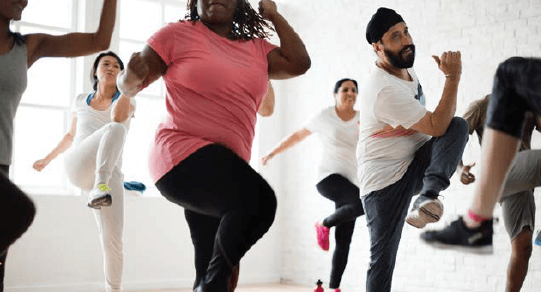 Having overweight or obesity can
contribute to developing insulin
resistance or type 2 diabetes. Once
someone develops diabetes, they have
to carefully monitor their blood sugar
levels to make sure their levels are not
too high or too low.
Researchers from the University of
Granada, in Spain recently studied the
role of the timing of moderate-to-vigorous
physical activity on glucose metabolism.
... They found an association
between being most active later in the
day and having more stable blood sugar
levels over a 24-hour period. The study
appears in the journal Obesity. ...
The researchers conducted a study
using data from the EXTREME trial to see
whether the timing of physical activity
impacts blood sugar stability. They observed a group of 186 adults, evenly
split between men and women, with an
average age of 46.8 years. The average
body mass index for the group was 32.9.
The participants wore a device to
track physical activity, and a continuous
glucose-monitoring device to track
glucose levels, for 14 days. The study
participants undertook an average of
24 minutes of moderate-to-vigorous
physical activity per day. ... Those who
completed most of their physical activity
in the morning did not show statistically
different glucose levels compared
with the inactive participants. For
the afternoon group, the participants
experienced a reduction of 0.98 mg/
dL. ...
Read full text
Having overweight or obesity can
contribute to developing insulin
resistance or type 2 diabetes. Once
someone develops diabetes, they have
to carefully monitor their blood sugar
levels to make sure their levels are not
too high or too low.
Researchers from the University of
Granada, in Spain recently studied the
role of the timing of moderate-to-vigorous
physical activity on glucose metabolism.
... They found an association
between being most active later in the
day and having more stable blood sugar
levels over a 24-hour period. The study
appears in the journal Obesity. ...
The researchers conducted a study
using data from the EXTREME trial to see
whether the timing of physical activity
impacts blood sugar stability. They observed a group of 186 adults, evenly
split between men and women, with an
average age of 46.8 years. The average
body mass index for the group was 32.9.
The participants wore a device to
track physical activity, and a continuous
glucose-monitoring device to track
glucose levels, for 14 days. The study
participants undertook an average of
24 minutes of moderate-to-vigorous
physical activity per day. ... Those who
completed most of their physical activity
in the morning did not show statistically
different glucose levels compared
with the inactive participants. For
the afternoon group, the participants
experienced a reduction of 0.98 mg/
dL. ...
Read full text
 Attachment is a deep, psychological
bond between two people. A
mother’s attachment is based purely on
nurture. The strength of that attachment
will be based upon the sensitive
and positive way she nurtures that
child. For a father, nurture is important,
but there’s an added element
that comes from the cortical area of
the brain. That’s the bit saying, “OK,
I’m going to push your developmental
boundaries. I’m going to make you
more resilient. I’m going to push you
into the world beyond the family.”
What joins all fathers around the world
is they have this role in scaffolding
the child’s entry into the social world.
That’s the underpinning of what they’re
involved in developmentally.
People can sometimes find that difficult because they’re like, “Well,
those are just culturally gendered
roles.” Yes, you can argue that, but it
also has an evolutionary explanation,
which is the fact that evolution doesn’t
do redundancy. It doesn’t cause two
individuals who have input into something
to have the same role if that’s not
required because that’s just a waste of
energy. Bear in mind that human children
take a huge amount of emotional,
cognitive, and practical input to raise.
So it’s important that the parents fit together
well and give that developmental
environment. ...
[Excerpt from an interview with Anna
Machin, author of the book “Why We Love:
The New Science Behind Our Closest Relationships”]
Read full text ‘Love Is Biological Bribery’
Read full text:
Attachment is a deep, psychological
bond between two people. A
mother’s attachment is based purely on
nurture. The strength of that attachment
will be based upon the sensitive
and positive way she nurtures that
child. For a father, nurture is important,
but there’s an added element
that comes from the cortical area of
the brain. That’s the bit saying, “OK,
I’m going to push your developmental
boundaries. I’m going to make you
more resilient. I’m going to push you
into the world beyond the family.”
What joins all fathers around the world
is they have this role in scaffolding
the child’s entry into the social world.
That’s the underpinning of what they’re
involved in developmentally.
People can sometimes find that difficult because they’re like, “Well,
those are just culturally gendered
roles.” Yes, you can argue that, but it
also has an evolutionary explanation,
which is the fact that evolution doesn’t
do redundancy. It doesn’t cause two
individuals who have input into something
to have the same role if that’s not
required because that’s just a waste of
energy. Bear in mind that human children
take a huge amount of emotional,
cognitive, and practical input to raise.
So it’s important that the parents fit together
well and give that developmental
environment. ...
[Excerpt from an interview with Anna
Machin, author of the book “Why We Love:
The New Science Behind Our Closest Relationships”]
Read full text ‘Love Is Biological Bribery’
Read full text:
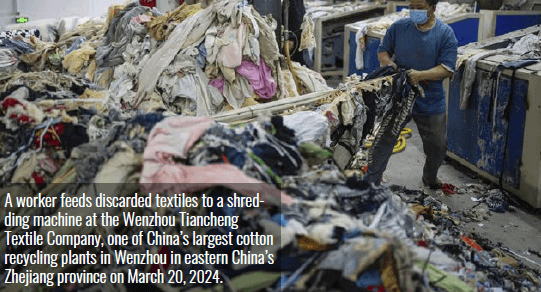 WENZHOU, China (AP) —At a factory
in Zhejiang province on
China’s eastern coast, two mounds
of discarded cotton clothing and bed
linens, loosely separated into dark and
light colors, pile up on a workroom
floor. Jacket sleeves, collars and brand
labels protrude from the stacks as
workers feed the garments into shredding
machines. It’s the first stage of a
new life for the textiles, part of a recycling
effort at the Wenzhou Tiancheng
Textile Company, one of the largest cotton
recycling plants in China.
Textile waste is an urgent global
problem, with only 12% recycled worldwide,
according to fashion sustainability
nonprofit Ellen MacArthur Foundation.
Even less —only 1%— are castoff
clothes recycled into new garments; the majority is used for low-value items
like insulation or mattress stuffing.
Nowhere is the problem more pressing
than in China, the world’s largest
textile producer and consumer, where
more than 26 million tons of clothes
are thrown away each year, according to
government statistics. Most of it ends
up in landfills. And factories like this
one are barely making a dent in a country
whose clothing industry is dominated
by “fast fashion” —cheap clothes
made from unrecyclable synthetics, not
cotton. Produced from petrochemicals
that contribute to climate change, air
and water pollution, synthetics account
for 70% of domestic clothing sales in
China. ...
Read full text:
WENZHOU, China (AP) —At a factory
in Zhejiang province on
China’s eastern coast, two mounds
of discarded cotton clothing and bed
linens, loosely separated into dark and
light colors, pile up on a workroom
floor. Jacket sleeves, collars and brand
labels protrude from the stacks as
workers feed the garments into shredding
machines. It’s the first stage of a
new life for the textiles, part of a recycling
effort at the Wenzhou Tiancheng
Textile Company, one of the largest cotton
recycling plants in China.
Textile waste is an urgent global
problem, with only 12% recycled worldwide,
according to fashion sustainability
nonprofit Ellen MacArthur Foundation.
Even less —only 1%— are castoff
clothes recycled into new garments; the majority is used for low-value items
like insulation or mattress stuffing.
Nowhere is the problem more pressing
than in China, the world’s largest
textile producer and consumer, where
more than 26 million tons of clothes
are thrown away each year, according to
government statistics. Most of it ends
up in landfills. And factories like this
one are barely making a dent in a country
whose clothing industry is dominated
by “fast fashion” —cheap clothes
made from unrecyclable synthetics, not
cotton. Produced from petrochemicals
that contribute to climate change, air
and water pollution, synthetics account
for 70% of domestic clothing sales in
China. ...
Read full text:
 The City of Baltimore, Maryland,
has filed a lawsuit against PepsiCo,
Coca-Cola and other major companies
to recoup costs associated with cleaning
up plastic pollution. The lawsuit
accuses the companies of making false
claims, failing to warn, having design
defects, using deceptive practices and
violating state and local laws.
“Baltimore is awash in plastic waste,
and the city is seeking accountability
from some of the biggest plastic polluters
—including PepsiCo, Coca-Cola,
and Frito Lay— for contributing to what
they have acknowledged as a crisis,”
according to a press release from one
of the law firms representing the city
in court. “The defendants have only
increased their plastic production while
touting sustainability and externalizing cleanup costs to local governments like
Baltimore, which has spent tens of millions
of dollars cleaning up their plastic
trash,” according to the lawsuit, filed
June 20 in Baltimore Circuit Court.
This is the second plastics-related
lawsuit in less than a year against
PepsiCo. In November 2023, the state
of New York sued PepsiCo over river
pollution, alleging the beverage company
was “harming the public and the
environment with its single-use plastic
packaging.”
The defendants, which include W.R.
Grace and Company, Mercury Plastics,
Adell Plastics and Polymershapes
Baltimore, have not yet responded
in court. ...
Read full text:
The City of Baltimore, Maryland,
has filed a lawsuit against PepsiCo,
Coca-Cola and other major companies
to recoup costs associated with cleaning
up plastic pollution. The lawsuit
accuses the companies of making false
claims, failing to warn, having design
defects, using deceptive practices and
violating state and local laws.
“Baltimore is awash in plastic waste,
and the city is seeking accountability
from some of the biggest plastic polluters
—including PepsiCo, Coca-Cola,
and Frito Lay— for contributing to what
they have acknowledged as a crisis,”
according to a press release from one
of the law firms representing the city
in court. “The defendants have only
increased their plastic production while
touting sustainability and externalizing cleanup costs to local governments like
Baltimore, which has spent tens of millions
of dollars cleaning up their plastic
trash,” according to the lawsuit, filed
June 20 in Baltimore Circuit Court.
This is the second plastics-related
lawsuit in less than a year against
PepsiCo. In November 2023, the state
of New York sued PepsiCo over river
pollution, alleging the beverage company
was “harming the public and the
environment with its single-use plastic
packaging.”
The defendants, which include W.R.
Grace and Company, Mercury Plastics,
Adell Plastics and Polymershapes
Baltimore, have not yet responded
in court. ...
Read full text:
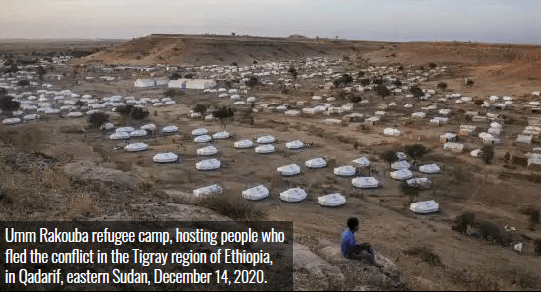 Since the beginning of Sudan’s conflict
in April last year, we’ve been
highlighting the international community’s
failure to address it. We’ve
focused a lot on Darfur, in the west of
the country, where wide-scale atrocities
have forced more than half a million
people to flee their homes, many across
the western border to Chad. Today,
we’re going to look at the conflict in
areas that border Eritrea and Ethiopia.
The fighting in Sudan between
the Rapid Support Forces (RSF) and
the Sudanese Armed Forces (SAF) is
causing intense civilian suffering for
Sudanese citizens in many parts of the
country. And they’re not the only ones.
Often overlooked is that more than one
million refugees were living in Sudan
when the conflict started, many of
them in the east. These are people who fled severe repression in Eritrea or the
atrocity-filled conflict in Ethiopia’s
Tigray region, hoping to find safety
in Sudan. Now, their lives could be in
danger again.
Recent weeks have seen RSF attacks
on towns in the area. If this spreads
to other parts of the eastern border
region, the fate of tens of thousands of
refugees will be very much at risk. Refugees
from Ethiopia in particular have
been trying to draw attention to their
precarious situation since the Sudanese
conflict began. Some fear they will be
targeted by the warring parties after
being accused of assisting enemies.
There are already reports some have
been arrested or detained. There’s no
clear protection or evacuation strategy
for any of ...
Read full text:
Since the beginning of Sudan’s conflict
in April last year, we’ve been
highlighting the international community’s
failure to address it. We’ve
focused a lot on Darfur, in the west of
the country, where wide-scale atrocities
have forced more than half a million
people to flee their homes, many across
the western border to Chad. Today,
we’re going to look at the conflict in
areas that border Eritrea and Ethiopia.
The fighting in Sudan between
the Rapid Support Forces (RSF) and
the Sudanese Armed Forces (SAF) is
causing intense civilian suffering for
Sudanese citizens in many parts of the
country. And they’re not the only ones.
Often overlooked is that more than one
million refugees were living in Sudan
when the conflict started, many of
them in the east. These are people who fled severe repression in Eritrea or the
atrocity-filled conflict in Ethiopia’s
Tigray region, hoping to find safety
in Sudan. Now, their lives could be in
danger again.
Recent weeks have seen RSF attacks
on towns in the area. If this spreads
to other parts of the eastern border
region, the fate of tens of thousands of
refugees will be very much at risk. Refugees
from Ethiopia in particular have
been trying to draw attention to their
precarious situation since the Sudanese
conflict began. Some fear they will be
targeted by the warring parties after
being accused of assisting enemies.
There are already reports some have
been arrested or detained. There’s no
clear protection or evacuation strategy
for any of ...
Read full text:
 A family in Florida has launched a
lawsuit against NASA, seeking compensation
after a piece of space junk
fell from the sky and crashed through
the roof of their house. Fortunately,
no one was injured in the incident,
although the family’s lawyer says the
ramifications of this case go far beyond
mere damage reparation and could set
a precedent for how future claims of
this sort are resolved.
A significant increase in rocket
launches and space operations in the
last few years has seen a massive rise
in debris floating around in Low Earth
Orbit, heightening the risk of collisions
in space and potentially posing a danger
to those on the ground. And while most
of this heavenly waste is likely to burn
up in the Earth’s atmosphere, the incident
in question serves as an ominous reminder of what can happen when bits
of refuse survive their descent.
In this case, the offending object was
identified by NASA as part of a stanchion
that was used to load a bunch of spent
batteries onto a cargo pallet onboard
the International Space Station (ISS).
Originally discarded from the ISS in
2021, the item was supposed to harmlessly
degrade upon re-entry, but a
fragment remained intact and eventually
fell straight through the roof of the
Otero family’s home in Naples, Florida,
on March 8 of this year.
“My clients are seeking adequate
compensation to account for the stress
and impact that this event had on their
lives,” said the family’s lawyer Mica
Nguyen Worthy in a ...
A family in Florida has launched a
lawsuit against NASA, seeking compensation
after a piece of space junk
fell from the sky and crashed through
the roof of their house. Fortunately,
no one was injured in the incident,
although the family’s lawyer says the
ramifications of this case go far beyond
mere damage reparation and could set
a precedent for how future claims of
this sort are resolved.
A significant increase in rocket
launches and space operations in the
last few years has seen a massive rise
in debris floating around in Low Earth
Orbit, heightening the risk of collisions
in space and potentially posing a danger
to those on the ground. And while most
of this heavenly waste is likely to burn
up in the Earth’s atmosphere, the incident
in question serves as an ominous reminder of what can happen when bits
of refuse survive their descent.
In this case, the offending object was
identified by NASA as part of a stanchion
that was used to load a bunch of spent
batteries onto a cargo pallet onboard
the International Space Station (ISS).
Originally discarded from the ISS in
2021, the item was supposed to harmlessly
degrade upon re-entry, but a
fragment remained intact and eventually
fell straight through the roof of the
Otero family’s home in Naples, Florida,
on March 8 of this year.
“My clients are seeking adequate
compensation to account for the stress
and impact that this event had on their
lives,” said the family’s lawyer Mica
Nguyen Worthy in a ...
 To help pay for his undergraduate
education, Elias Garcia-Pelegrin had
an unusual summer job: cruise ship magician.
“I was that guy who comes out
at dinnertime and does random magic
for you,” he says. But his latest magic
gig is even more unusual: performing
for Eurasian jays at Cambridge University’s
Comparative Cognition Lab.
Birds can be harder to fool than
tourists. And to do magic for the jays,
he had to learn to do sleight-of-hand
tricks with a live, wriggling waxworm
instead of the customary coin. But performing
in an aviary does have at least
one advantage: The birds aren’t expecting
to be entertained. “You don’t have
to worry about impressing anybody, or
tell a joke,” Garcia-Pelegrin says. “So
you just do the magic.” In just the last few years, researchers
have become interested in what
they can learn about animal minds
by studying what does and doesn’t
fool them. “Magic effects can reveal
blind spots in seeing and roadblocks
in thinking,” says Nicky Clayton, who
heads the Cambridge lab and, with
Garcia-Pelegrin and others, cowrote an
overview of the science of magic in the
Annual Review of Psychology.
What we visually perceive about the
world is a product of how our brains
interpret what our eyes see. Humans
and other animals have evolved
to handle the immense amount of
visual information we’re exposed
to ...
To help pay for his undergraduate
education, Elias Garcia-Pelegrin had
an unusual summer job: cruise ship magician.
“I was that guy who comes out
at dinnertime and does random magic
for you,” he says. But his latest magic
gig is even more unusual: performing
for Eurasian jays at Cambridge University’s
Comparative Cognition Lab.
Birds can be harder to fool than
tourists. And to do magic for the jays,
he had to learn to do sleight-of-hand
tricks with a live, wriggling waxworm
instead of the customary coin. But performing
in an aviary does have at least
one advantage: The birds aren’t expecting
to be entertained. “You don’t have
to worry about impressing anybody, or
tell a joke,” Garcia-Pelegrin says. “So
you just do the magic.” In just the last few years, researchers
have become interested in what
they can learn about animal minds
by studying what does and doesn’t
fool them. “Magic effects can reveal
blind spots in seeing and roadblocks
in thinking,” says Nicky Clayton, who
heads the Cambridge lab and, with
Garcia-Pelegrin and others, cowrote an
overview of the science of magic in the
Annual Review of Psychology.
What we visually perceive about the
world is a product of how our brains
interpret what our eyes see. Humans
and other animals have evolved
to handle the immense amount of
visual information we’re exposed
to ...
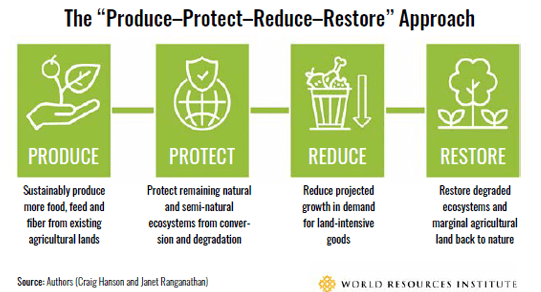 Rising population and demand
for food, feed, fiber and fuel are
increasing competition for land. For
example, new WRI research projects
that by 2050, an area of land nearly
twice the size of India will be converted
to agriculture, while an area the size
of the continental United States will be
needed to meet the world’s growing
demand for wood. ...
To manage society’s competing
demands on the finite resource of land,
the world simultaneously needs to:
1. Produce more food, feed and fiber on
existing agricultural lands and some
working forests.
2. Protect remaining natural and seminatural
ecosystems (e.g., primary
forests, secondary forests, wetlands,
grasslands) from conversion and
degradation. 3. Reduce projected growth in demand
for land-intensive goods, particularly
by high consumers.
4. Restore degraded ecosystems and
marginal agricultural land (with
limited improvement potential) back
to nature.
For each of these four pillars, WRI’s
research suggests a goal, a suite of
strategies and some observations:
1) Produce. Humanity needs to
produce enough food, fiber and feed
to meet the needs of nearly 10 billion
people by 2050 on the same (and ideally
less) working land area that now
provides for roughly 8 billion. This requires
boosting yields while minimizing
unintended environmental impacts and
increasing urban density. ...
Rising population and demand
for food, feed, fiber and fuel are
increasing competition for land. For
example, new WRI research projects
that by 2050, an area of land nearly
twice the size of India will be converted
to agriculture, while an area the size
of the continental United States will be
needed to meet the world’s growing
demand for wood. ...
To manage society’s competing
demands on the finite resource of land,
the world simultaneously needs to:
1. Produce more food, feed and fiber on
existing agricultural lands and some
working forests.
2. Protect remaining natural and seminatural
ecosystems (e.g., primary
forests, secondary forests, wetlands,
grasslands) from conversion and
degradation. 3. Reduce projected growth in demand
for land-intensive goods, particularly
by high consumers.
4. Restore degraded ecosystems and
marginal agricultural land (with
limited improvement potential) back
to nature.
For each of these four pillars, WRI’s
research suggests a goal, a suite of
strategies and some observations:
1) Produce. Humanity needs to
produce enough food, fiber and feed
to meet the needs of nearly 10 billion
people by 2050 on the same (and ideally
less) working land area that now
provides for roughly 8 billion. This requires
boosting yields while minimizing
unintended environmental impacts and
increasing urban density. ...

 A sleep sanctuary
for people hypersensitive
to sound
and/or light.
This tent give autistic
kids a sense
of security and
containing when
sleeping.
Available for twin,
full-size and queen
size beds.
It even works on
most bunk beds.
www.alvantor.com
A sleep sanctuary
for people hypersensitive
to sound
and/or light.
This tent give autistic
kids a sense
of security and
containing when
sleeping.
Available for twin,
full-size and queen
size beds.
It even works on
most bunk beds.
www.alvantor.com
 Old newspaper & magazine pieces
have been rolled into this eco friendly
pet pot. Random colour selection. 12
cm high. Made by Paper High.
www.protecttheplanet.co.uk
Old newspaper & magazine pieces
have been rolled into this eco friendly
pet pot. Random colour selection. 12
cm high. Made by Paper High.
www.protecttheplanet.co.uk
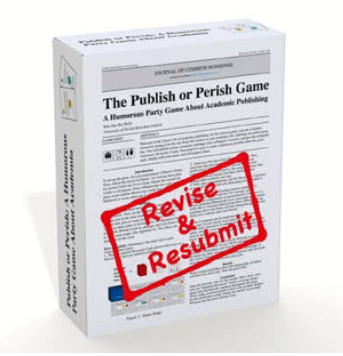

 Featuring large
apertures and
easy functionality,
this is the ideal beginner telescope.
An inexpensive solution for bright,
detailed visual observing using a simple
design. www.skywatcherusa.com
Featuring large
apertures and
easy functionality,
this is the ideal beginner telescope.
An inexpensive solution for bright,
detailed visual observing using a simple
design. www.skywatcherusa.com
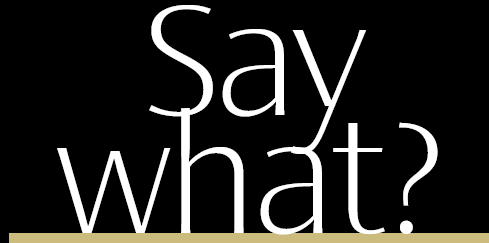
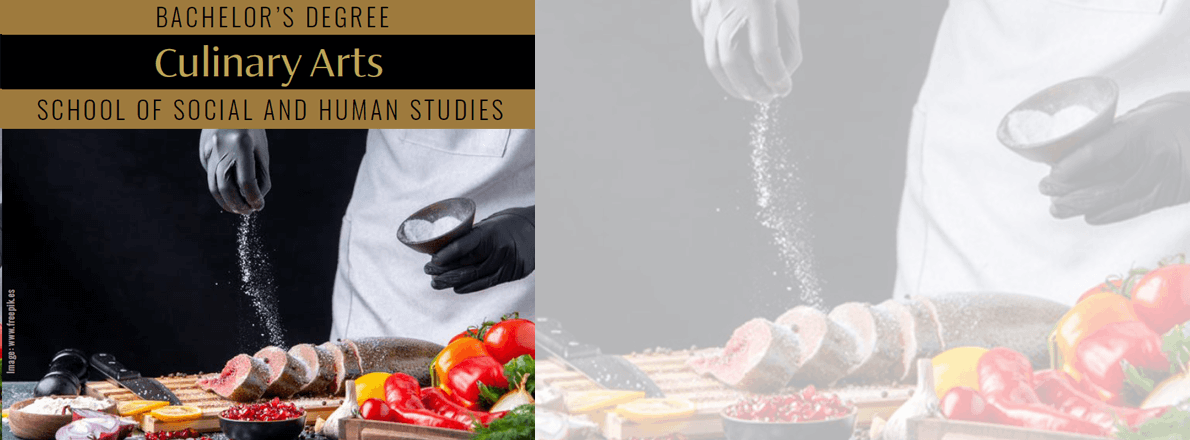 The Bachelor program in Culinary
Arts at AIU provides students with
the research and analytical tools necessary
to expand their culinary knowledge.
This program analyzes a wide
range of topics relevant to advanced
positions in the industry, such as
facilities and event management, financial
management and cost control,
marketing, research and writing, small
business development, and organizational
psychology. Our program does
not require every student to study the
same subjects and use the same books
and other learning materials as every
other student. If you are a purposedriven
individual who wants to elevate
their life and make a solid contribution
to the world, then this Bachelor program
is for you.
AIU’s Bachelor degree in Culinary
Arts goes one step further by allowing
students to study and research
multiple key areas of computer science
to develop a unique foundation
of practical knowledge and computer
science theory.
Your AIU Distance Learning Bachelor
program in Culinary Arts will be
a custom-made program, designed
just for you by you and your advisor.
This flexibility to meet your needs
is seldom found in other distance
learning programs. Our program does
not require every student to study
the same subjects and use the same
books and other learning materials as
every other student. Instead, our online
Bachelor programs are designed just for
you. They are individually designed to
meet your needs and help you to reach
your professional and personal goals.
The Bachelor program in Culinary
Arts at AIU provides students with
the research and analytical tools necessary
to expand their culinary knowledge.
This program analyzes a wide
range of topics relevant to advanced
positions in the industry, such as
facilities and event management, financial
management and cost control,
marketing, research and writing, small
business development, and organizational
psychology. Our program does
not require every student to study the
same subjects and use the same books
and other learning materials as every
other student. If you are a purposedriven
individual who wants to elevate
their life and make a solid contribution
to the world, then this Bachelor program
is for you.
AIU’s Bachelor degree in Culinary
Arts goes one step further by allowing
students to study and research
multiple key areas of computer science
to develop a unique foundation
of practical knowledge and computer
science theory.
Your AIU Distance Learning Bachelor
program in Culinary Arts will be
a custom-made program, designed
just for you by you and your advisor.
This flexibility to meet your needs
is seldom found in other distance
learning programs. Our program does
not require every student to study
the same subjects and use the same
books and other learning materials as
every other student. Instead, our online
Bachelor programs are designed just for
you. They are individually designed to
meet your needs and help you to reach
your professional and personal goals.
 Atlantic International University is accredited by the Accreditation Service for International
Schools, Colleges and Universities (ASIC). ASIC Accreditation is an internationally
renowned quality standard for colleges and universities. Visit ASIC’s Directory of Accredited
Colleges and Universities. ASIC is a member of CHEA International Quality Group
(CIQG) in the USA, an approved accreditation body by the Ministerial Department of the Home Office
in the UK, and is listed in the International Directory of the Council for Higher Education Accreditation
(CHEA). The University is based in the United States and was established by corporate charter in 1998.
Atlantic International University is accredited by the Accreditation Service for International
Schools, Colleges and Universities (ASIC). ASIC Accreditation is an internationally
renowned quality standard for colleges and universities. Visit ASIC’s Directory of Accredited
Colleges and Universities. ASIC is a member of CHEA International Quality Group
(CIQG) in the USA, an approved accreditation body by the Ministerial Department of the Home Office
in the UK, and is listed in the International Directory of the Council for Higher Education Accreditation
(CHEA). The University is based in the United States and was established by corporate charter in 1998.
 In some cases, accredited colleges
may not accept for transfer courses and degrees
completed at unaccredited colleges, and some
employers may require an accredited degree as
a basis for eligibility for employment. Potential
students should consider how the above may affect
their interests, AIU respects the unique rules and
regulations of each country and does not seek to
influence the respective authorities. In the event
that a prospective student wishes to carry out any
government review or process in regards to his
university degree, we recommend that the requirements
of such are explored in detail with the relevant
authorities by the prospective student as the
university does not intervene in such processes.
AIU students can be found in over 180 countries,
they actively participate and volunteer
in their communities as part of their academic
program and have allocated thousands of service
hours to diverse causes and initiatives. AIU
programs follow the standards commonly used by
colleges and universities in the United States with
regards to the following: academic program
structure, degree issued, transcript, and
other graduation documents.
AIU graduation documents can include
an apostille and authentication from the
US Department of State to facilitate their
use internationally.
In some cases, accredited colleges
may not accept for transfer courses and degrees
completed at unaccredited colleges, and some
employers may require an accredited degree as
a basis for eligibility for employment. Potential
students should consider how the above may affect
their interests, AIU respects the unique rules and
regulations of each country and does not seek to
influence the respective authorities. In the event
that a prospective student wishes to carry out any
government review or process in regards to his
university degree, we recommend that the requirements
of such are explored in detail with the relevant
authorities by the prospective student as the
university does not intervene in such processes.
AIU students can be found in over 180 countries,
they actively participate and volunteer
in their communities as part of their academic
program and have allocated thousands of service
hours to diverse causes and initiatives. AIU
programs follow the standards commonly used by
colleges and universities in the United States with
regards to the following: academic program
structure, degree issued, transcript, and
other graduation documents.
AIU graduation documents can include
an apostille and authentication from the
US Department of State to facilitate their
use internationally.
| Dr. Franklin Valcin Presi den t/Academic Dean |
Dr. José Mercado Chief Executive Officer Chairman of the Board of Trustees |
Ricardo González, PhD Provost |
| Dr. Ricardo Gonzalez Chief Operation Officer and MKT Director |
Linda Collazo Logistics Coordinator |
AIU Tutors Coordinators: Deborah Rodriguez Amiakhor Ejaeta Amanda Gutierrez William Mora Miriam James Admissions Coordinators: Amalia Aldrett Sandra Garcia Junko Shimizu Veronica Amuz Alba Ochoa Jenis Garcia Judith Brown Chris Soto René Cordón Dr. Anderas Rissler Academic Coordinators: Dr. Adesida Oluwafemi Dr. Emmanuel Gbagu Dr. Lucia Gorea Dr. Edgar Colon Dr. Mario Rios Freddy Frejus Dr. Nilani Ljunggren De Silva Dr. Scott Wilson Dr. Mohammad Shaidul Islam |
| Dr. Miriam Garibaldi Vice provost for Research |
Carolina Valdes Human Resource Coordinator |
|
| Dr. Ofelia Miller Director of AIU |
Carlos Aponte Teleco mmunications Coordinator |
|
| Clara Margalef Director of Special Projects of AIU |
David Jung Corporate/Legal Counsel |
|
| Juan Pablo Moreno Director of Operations |
Bruce Kim Advisor/Consultant |
|
| Paula Viera Director of Intelligence Systems |
Thomas Kim Corporate/ Accounting Counsel |
|
| Felipe Gomez Design Director / IT Supervisor |
Maricela Esparza Administrative Coordinator |
|
| Kevin Moll Web Designer |
Chris Benjamin IT and Hosting Support |
|
| Daritza Ysla IT Coordinator |
Maria Pastrana Accounting Coordinator |
|
| Daritza Ysla IT Coordinator |
Roberto Aldrett Communications Coordinator |
|
| Nadeem Awan Chief Programming Officer |
Giovanni Castillo IT Support |
|
| Dr. Edward Lambert Academic Director |
Antonella Fonseca Quality Control & Data Analysis |
|
| Dr. Ariadna Romero Advisor Coordinator |
Adrián Varela Graphic Design |
|
| Jhanzaib Awan Senior Programmer |
Vanesa D’Angelo Content Writer |
|
| Leonardo Salas Human Resource Manager |
Jaime Rotlewicz Dean of Admissions |
|
| Benjamin Joseph IT and Technology Support |
Michael Phillips Registrar’s Office |
|
| Rosie Perez Finance Coordinator |
||
 The School of Business and Economics
allows aspiring and practicing
professionals, managers, and entrepreneurs
in the private and public sectors
to complete a self paced distance
learning degree program of the highest
academic standard.
The ultimate goal is to empower
learners and help them take advantage
of the enormous array of resources
from the world environment in order
to eliminate the current continuum of
poverty and limitations.
Degree programs are designed for
those students whose professional experience has been in business,
marketing, administration, economics,
finance and management.
The School of Business and Economics
allows aspiring and practicing
professionals, managers, and entrepreneurs
in the private and public sectors
to complete a self paced distance
learning degree program of the highest
academic standard.
The ultimate goal is to empower
learners and help them take advantage
of the enormous array of resources
from the world environment in order
to eliminate the current continuum of
poverty and limitations.
Degree programs are designed for
those students whose professional experience has been in business,
marketing, administration, economics,
finance and management.
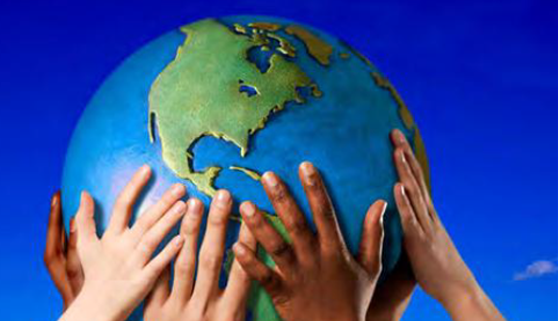 The School of Social and Human Studies
is focused on to the development of
studies which instill a core commitment
to building a society based on social and
economic justice and enhancing opportunities
for human well being.
The founding principles lie on the
basic right of education as outlined
in the Declaration of Human Rights.
We instill in our students a sense of
confidence and self reliance in their
ability to access the vast opportunities
available through information channels,
the world wide web, private, public,
nonprofit, and nongovernmental organizations in an ever expanding
global community.
Degree programs are aimed towards
those whose professional life has been
related to social and human behavior,
with the arts, or with cultural studies.
The School of Social and Human Studies
is focused on to the development of
studies which instill a core commitment
to building a society based on social and
economic justice and enhancing opportunities
for human well being.
The founding principles lie on the
basic right of education as outlined
in the Declaration of Human Rights.
We instill in our students a sense of
confidence and self reliance in their
ability to access the vast opportunities
available through information channels,
the world wide web, private, public,
nonprofit, and nongovernmental organizations in an ever expanding
global community.
Degree programs are aimed towards
those whose professional life has been
related to social and human behavior,
with the arts, or with cultural studies.
 The School of Science and Engineering
seeks to provide dynamic, integrated,
and challenging degree programs
designed for those whose experience
is in industrial research, scientific production,
engineering and the general
sciences. Our system for research and
education will keep us apace with the
twenty-first century reach scientific
advance in an environmentally and
ecologically responsible manner to allow
for the sustainability of the human
population. We will foster among our
students a demand for ethical behavior,
an appreciation for diversity, an understanding
of scientific investigation, knowledge of design innovation, a
critical appreciation for the importance
of technology and technological change
for the advancement of humanity.
The School of Science and Engineering
seeks to provide dynamic, integrated,
and challenging degree programs
designed for those whose experience
is in industrial research, scientific production,
engineering and the general
sciences. Our system for research and
education will keep us apace with the
twenty-first century reach scientific
advance in an environmentally and
ecologically responsible manner to allow
for the sustainability of the human
population. We will foster among our
students a demand for ethical behavior,
an appreciation for diversity, an understanding
of scientific investigation, knowledge of design innovation, a
critical appreciation for the importance
of technology and technological change
for the advancement of humanity.
 With access to a global catalog created and maintained collectively by more than
9,000 participating institutions, AIU students have secured excellent research
tools for their study programs.
With access to a global catalog created and maintained collectively by more than
9,000 participating institutions, AIU students have secured excellent research
tools for their study programs.